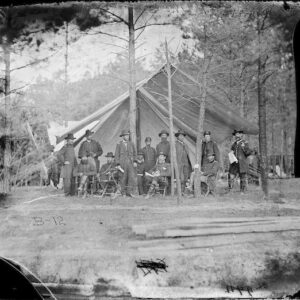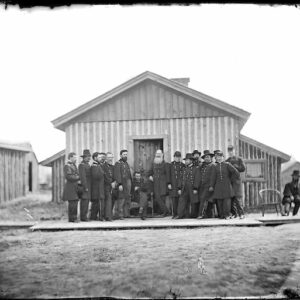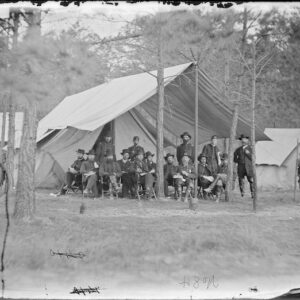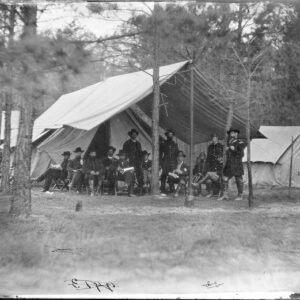Tag: Barnard (John G.)
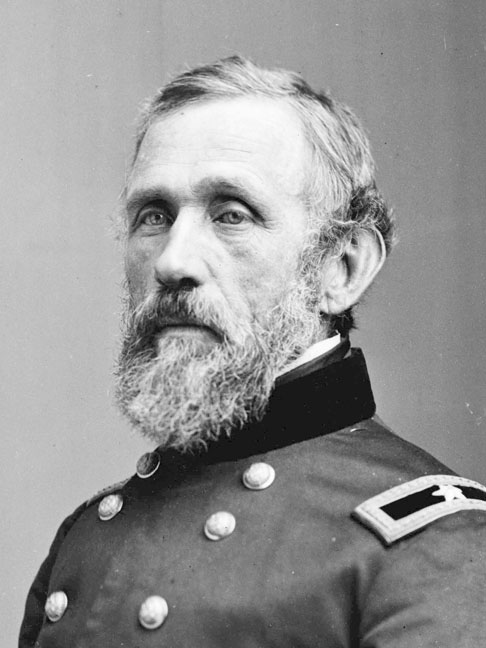 Wikipedia says: John Gross Barnard (May 19, 1815 – May 14, 1882) was a career engineering officer in the U.S. Army, serving in the Mexican-American War, as the Superintendent of the United States Military Academy and as a general in the Union Army during the American Civil War. He served as Chief Engineer of the Army of the Potomac, 1861 to 1862, Chief Engineer of the Department of Washington from 1861 to 1864, and as Chief Engineer of the armies in the field from 1864 to 1865. He also was a distinguished scientist, engineer, mathematician, historian and author.
Wikipedia says: John Gross Barnard (May 19, 1815 – May 14, 1882) was a career engineering officer in the U.S. Army, serving in the Mexican-American War, as the Superintendent of the United States Military Academy and as a general in the Union Army during the American Civil War. He served as Chief Engineer of the Army of the Potomac, 1861 to 1862, Chief Engineer of the Department of Washington from 1861 to 1864, and as Chief Engineer of the armies in the field from 1864 to 1865. He also was a distinguished scientist, engineer, mathematician, historian and author.
…Soon after the outbreak of the Civil War, U.S. Army commander Major General and Brevet Lieutenant General Winfield Scott, bearing in mind Barnard’s success at defending his Tampico-based supply lines during the Mexican–American War, assigned then Major Barnard to the Department of Washington. This was the Union Army unit in charge of defending Washington, D.C., the capital of the United States. On April 28, 1861, Colonel Joseph K. Mansfield, the department commander, a former engineer himself, attached Barnard to his headquarters as chief engineer.
When the Union Army moved into Northern Virginia on May 24, 1861, Barnard oversaw the erection of fortifications on the Arlington hills. He also accompanied the Army to Manassas in July 1861 and was present at the Union defeat at the First Battle of Bull Run (Manassas). Between June 1861 and September 1861, Barnard also served on the U.S. Navy’s Blockade Strategy Board. Major General George B. McClellan assumed command of the Military Division of the Potomac, the troops around Washington, D.C., on July 23, 1861. On August 15, 1861, McClellan was appointed to the command of the Army and Department of the Potomac, and Barnard became chief engineer of the Military District of Washington. As McClellan formulated his thoughts for fortifications around Washington, D.C., Barnard planned, designed and oversaw their construction.
In Barnard’s A Report on the Defenses of Washington, published after the Civil War, he commented on the complexity and ever-changing nature of the project:
From a few isolated works covering bridges or commanding a few especially important points, was developed a connected system of fortification by which every prominent point, at intervals of 800 to 1,000 yards, was occupied by an inclosed field-fort every important approach or depression of ground, unseen from the forts, swept by a battery for field-guns, and the whole connected by rifle-trenches which were in fact lines of infantry parapet, furnishing emplacement for two ranks of men and affording covered communication along the line, while roads were opened wherever necessary, so that troops and artillery could be moved rapidly from one point of the immense periphery to another, or under cover, from point to point along the line.
On September 23, 1861, President Abraham Lincoln appointed Barnard to the grade of brigadier general, U.S. Volunteers, to rank from September 23, 1861. Lincoln formally nominated Barnard as brigadier general on December 21, 1861, and the U.S. Senate confirmed the promotion on March 24, 1862. Barnard was Engineer for the Army of the Potomac between August 20, 1861, and August 16, 1862. He participated in the Peninsula Campaign and directed the siege works at Yorktown, Virginia, of offensive and defensive works on the Chickahominy River. On the march to Harrison’s Landing on the James River, he reconnoitered and selected positions for the Battle of Gaines Mill, the passage of White Oak Swamp and the Battle of Malvern Hill. After the conclusion of his work in that campaign, he again was engaged in working on the defenses of Washington as chief engineer of the Department of Washington until May 1864. He had certain additional special assignments such as devising the defenses of Pittsburgh, Pennsylvania, during this period.
Upon the death of the Chief of the U. S. Army Corps of Engineers, Brigadier General Joseph Totten, on April 22, 1864, President Lincoln nominated Barnard to be the next Chief of the U.S. Army Corps of Engineers at the grade of brigadier general, U.S. Army, but Barnard immediately asked that the nomination be withdrawn.
Barnard was Engineer XXII Corps, Department of Washington, between February 2, 1863, and May 25, 1864. Between May 25, 1864, and June 5, 1864, he was Chief Engineer for the Army of the Potomac. He was on the staff of General Ulysses S. Grant in the Overland Campaign between June 5, 1864, and July 4, 1864. On July 4, 1864, President Lincoln nominated and the U. S. Senate confirmed the award to General Barnard of the honorary rank of brevet major general, U.S. Volunteers, to rank from July 4, 1864, for “Meritorious and Distinguished Services during the Rebellion.”
Barnard was appointed Chief Engineer of the armies in the field with his appointment to General Grant’s staff. He remained in this position during the Siege of Petersburg, including the capture of Fort Harrison, the Battle of Hatcher’s Run and the final assault on Petersburg, until the surrender of the Army of Northern Virginia at Appomattox, Virginia, on April 9, 1865.
General Barnard served in the honor guard for President Lincoln’s funeral in April 1865. He was mustered out of the U.S. Volunteers on January 15, 1866.
On April 10, 1866, President Andrew Johnson nominated and on May 4, 1866, the U.S. Senate confirmed the award to Barnard of the honorary grade of brevet brigadier general, USA, (Regular Army) to rank from March 13, 1865, for “Gallant and Meritorious Service in the Campaign terminating with the Surrender of the Insurgent Army under Gen. R. E. Lee.” On July 17, 1866, President Johnson nominated and on July 23, 1866, the U.S. Senate confirmed the award to Barnard of the honorary grade of brevet major general, USA, to rank from March 13, 1865 “for Gallant and Meritorious Services in the Field during the Rebellion.”
